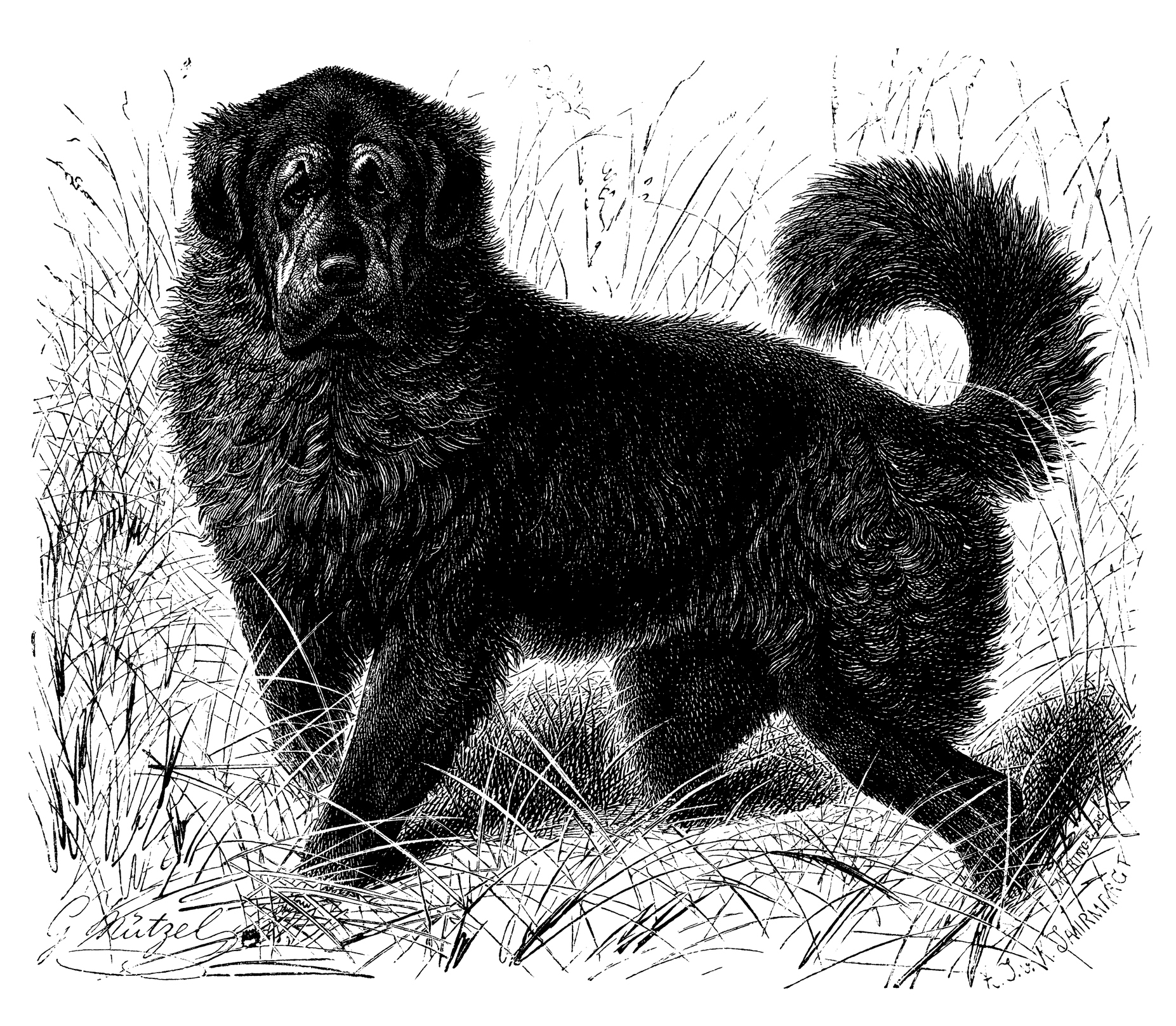Tibetan Mastiffs Bred with Mountain Wolves to Survive at Super-High Altitudes

The Tibetan Mastiff is a uncommon and ancient breed of dogs found at super-high altitudes in the Tibet and Himalayas. According to National Geographic, only around one or two thousand of this dog breed alive today. The breed consists of large, double-coated dogs in various coat colors (black, red, gold, and gray).
There was a debate on how the Tibetan Mastiff could survive such a harsh climate, but the discussion has been put to rest. According to new studies, the Tibetan Mastiff bred with mountain wolves to survive at super-high altitudes.
The Tibetan Mastiff
The Mastiff is a dog breed believed to have originated more than twenty thousand years ago from the regions of Tibet, a Buddhist territory of China. These dogs, often mistaken for bears, were initially kept to protect the Buddhist monasteries from large animals such as snow leopards and wolves.
This primitive breed has a life span of ten to sixteen years and can survive in the harsh climates of Ladakh, Tibet, and the Himalayas. They are known to have one variation in the West, but the Indian breed is divided into two variations: the smaller Lion Head breed, known for their long hair (mane), and the bigger Tiger Head breed, characterized by their short hair.
Tibetan Mastiff is not considered a house pet but rather a flock guarding pet used by livestock breeders in mountainous areas.
The breed was first introduced to the West in the early 20th century by the Prince of Wales and quickly gained popularity by the end of the 1980s. There was much debate on the genealogy and ancestry of the Tibetan Mastiff. However, recent studies have shown that the Tibetan Mastiff bred with mountain wolves to combat the harsh mountainous climate of the Himalayas.
The Tibetan Mastiff Bred with Mountain Wolves
It was always a mystery how the bulky dog Tibetan Mastiff could survive and live alongside humans fifteen thousand feet high in mountainous areas of the Himalayas where any average dog wouldn’t have been able to survive.
Researchers, for many years, believed that the Tibetan Mastiff hybridized with the species of wolves as they both share a similar genome. A 2011 study showed the Tibetan Mastiff species shared a resemblance in their DNA with the Canis species (wolf species), allowing them to survive at super-high altitudes. However, it was still unknown how exactly the genome helped them.
Recent research has revealed the gene responsible and how it allows the Tibetan Mastiff to survive in such harsh climates. The changes were accredited to the presence of the EPAS1 gene.
A study in the journal Molecular Biology and Evolution showed that the EPAS1 gene allowed for mutation in two essential amino acids, changing the structure and function of hemoglobin, a protein in red blood cells responsible for oxygen transport.
The study stated the gene increased the oxygen absorbing efficiency of hemoglobin by up to 50%. Interestingly, the gene was at first an inactive gene part of the wolf genome which later integrated into the active role, from where it was believed to have been transferred to the Tibetan Mastiff species.
With the clarity that the Tibetan Mastiff got this gene from the wolf, the focus of biologists shifted to finding out which wolf species the Tibetan Mastiff got the gene from. To discover that, researcher Zhen Wang and colleagues began analyzing genome segments from twenty-nine Canids, including the grey wolf and the Tibetan Mastiff.
Their study revealed that Tibetan Mastiff was more phenologically related to ancient Chinese dogs than the wolves. However, they also revealed that the Tibetan Mastiff shared two genes with grey wolf species: the EPAS1 gene and the HBB gene.
Further research showed that the Tibetan Mastiff bred with grey wolves to survive at super-high altitudes around twenty-four thousand years ago. The timeline coincided with the arrival of modern Tibetans.
These findings finally solved the mystery of how the Tibetan Mastiff came about and could survive at super high altitudes to rest. The answer was simple: grey wolves.
Tibetan Mastiff as Pets
Tibetan Mastiff is an intelligent breed of dog that is easy to train and does not require much looking after. Like all dogs, the Tibetan Mastiff is loyal and highly protective of its family, serving well as a guard dog.
The aggressiveness of the Tibetan Mastiff depends on its training. The hostility shown to strangers can be mild or extreme, depending on how you want them to act. However, it still means being careful with them when introducing themselves to strangers.
Tibetan Mastiff is a friendly dog, originally used as a guard dog for livestock. The dog will not upset family members and other pets in the house.
Tibetan Mastiff is an active species and requires regular walking and open areas to run in. They are also difficult to feed, as they can sometimes spend days not eating. Their strength is comparable to their size, with enough jaw strength to chew through wooden doors and fences.
Despite the large size, the Tibetan Mastiff doesn’t shed much, around once a year, and its coat does not have the typical bad dog smell. The Mastiff does have a lough and long howl, accredited to its wolf ancestry.
Despite their problems, Tibetan Mastiff is an extremely friendly (to owners) and laid-back dog that does not require much handling. It also poses no danger to kids.
Tibetan Mastiff, hailing its name from the Tibet regions of the Himalayas, are large dogs with wolf ancestry. While it used to be a mystery why the Chinese Buddhist dog breed came to such high altitudes and how it was able to survive such harsh conditions, scientists today have proved the Tibetan Mastiff bred with mountain wolves to survive super-high altitudes.
